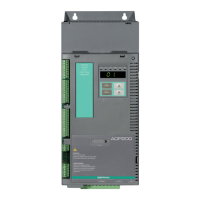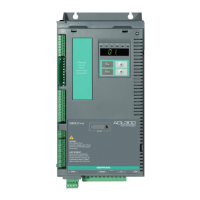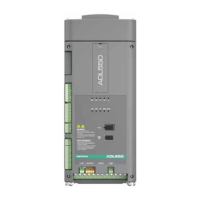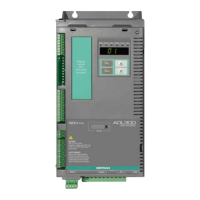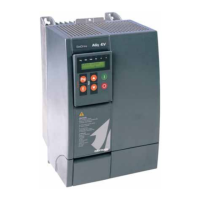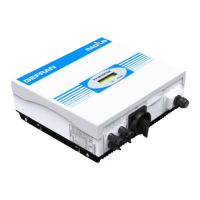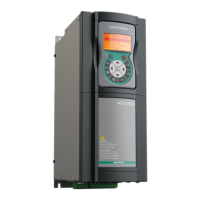_____ _
User Guide Electrical Line Shaft for ADV200 Page 9 of 72
4 Master-slave configurations
The electric line shaft function operates with position reference from physical master (encoder) or virtual
master. The master position can be transmitted to the slave by repetition cards and encoder input or by Fast
Link fast synchronous bus (optional EXP-FL-XCAN-ADV card). The virtual master is always transmitted by
Fast Link.
When the virtual master is used, all of the participants are slaves. The advantage of this configuration is that
it eliminates the phase delay between master system and slaves, typical of any system with a physical master.
The virtual master is generated in one of the ADV200 inverters in the system; in all cases, this ADV200 is
considered a slave.
The IPA 11018 Els Master se application parameter is used to select the source for the position reference to
which the slave axis is connected during operation in electrical line shaft mode.
With multi-shaft applications, you can use two different master-slave configurations:
1. Equal Ranking configuration, where the master is the same for all of the slaves
2. Chain configuration, where each slave transfers its position to the next slave
4.1.1 Example of Equal Ranking configuration
In this configuration, the master position is the same for all of the slaves.
Figure 2. Equal Ranking Configuration
The master drive contains a single encoder card to connect the encoder and repeat signals A and B to the
slaves.
The slave drives contain two encoder cards. The feedback encoder of the motor for Flux Vector CL control is
connected to the first card. The signals of the encoder repeated by the master drive, in turn repeated for the
next slave in the chain, are connected to the second card.
The same configuration can be reproduced by using Fast Link communication. In this case, an encoder card
for feedback input and an EXP-FL-XCAN-ADV card to manage Fast Link communication have to be installed
on each drive.
